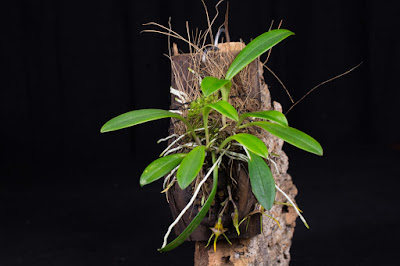Masdevallia zahlbruckneri is native to Bolivia, Colombia, Costa Rica, Ecuador and Panama. This epiphytic species is found in a large area, but the plants are found in very dispersed positions. In Costa Rica they grow in the National Park of Santa Maria...
Masdevallia zahlbruckneri also called as Zahlbruckner's Masdevallia, Masdevallia humilis, Zahleria zahlbruckneri, is a species of the genus Masdevallia. This species was described by Friedrich Fritz Wilhelm Ludwig Kraenzlin in 1921.
IDENTIFY MASDEVALLIA ZAHLBRUCKNERI
Masdevallia zahlbruckneri is native to Bolivia, Colombia, Costa Rica, Ecuador and Panama. This epiphytic species is found in a large area, but the plants are found in very dispersed positions. In Costa Rica they grow in the National Park of Santa Maria and in the forests of the Rincón de La Vieja at heights of 600-800 m. In Panama, the plants meet in the province of Coclé. In Colombia, it is located near Dabeiba in the department of Antioquia at an altitude of 1700-2000 m, in the department of Valle del Cauca near Río Dagua at an altitude of 1500 m, and in the department of Narino on the road to Tumaco. In Ecuador, they grow in the area of low-lying rain forests on the western slopes of the Andes, in the province of Cotopoxi.
It is a mini-miniature sized, hot to cool growing epiphyte, which reaching 5.0-11.5 cm in height, with an erect, 5 to 6 mm long stem enveloped by 2 to 3 close, tubular sheaths carrying a single, apical, erect, coriaceous, fleshy, elliptic-ovate, obtuse, 4-10 cm long leaves that gradually narrow into the sub-petiolate base.
Zahlbruckner's Masdevallia blooms in the spring on a prostrate to descending, 3 to 7 cm long inflorescence arising from low on the ramicaul with a bract below the middle and tubular floral bracts with successive single flowers held horizontally well below the leaves. The flowers are 1-2 cm in diameter. The yellow dorsal petal often has red or purple spots and connected to the side flakes of the outer whorl, forming cylindrical tube. The wide, triangular free part at the end narrows into an erect, yellow tail. This petiole is usually slender, but sometimes it stretches towards the end. The red-purple side petals are gently speckled with darker purple spots. The spots may be convex and sometimes have tufts of red hair. The inner whorl flakes are white with red on the half closer to the lip. The ruffle is from white to pink and is gently purple spotted. These dots can sometimes be convex. The spine is from yellow-green to green and its edge is usually purple.
MASDEVALLIA ZAHLBRUCKNERI CARE AND CULTURE
Cultural information should only be used as a guide, and should be to be adapted to suit you. Your physical location; where you grow your plants, how much time you have to devote to their care, and many other factors, will need to be taken into account. Only then can you decide on the cultural methods that best suit you and your plants.
Light:
Masdevallia zahlbruckneri needs a light level of 8000-15000 lux. The light should be filtered and dispersed, and plants should never be exposed to direct sunlight. Strong air movement should be ensured all the time.
Temperature:
It is a plant with moderate thermal requirements. Similar throughout the year - average temperatures of 25-27 ° C, average night temperatures 13-14 ° C, with an amplitude of daily variations of 11-14 ° C.
Humidity:
Zahlbruckner's Masdevallia needs the humidity of 70-75% throughout the year.
Substrate, growing media and repotting:
Masdevallia zahlbruckneri grow well attached to pieces of tree ferns or cork with high humidity and daily watering during the summer. During the dry and hot periods it may be necessary to water several times a day.
They can also grow in pots with a substrate which quickly draining excess water, however, contains substances that retain a certain amount - such as chopped sphagnum moss or perlite. Wood charcoal is also often added to ensure the air permeability of the substrate and protection against acidification.
It is recommend repotting every year.
Watering:
Rainfall is moderate and even plentiful for most of the year, with a 2-3-month drier season in winter. The substrate of the cultivated plants should be moist and should never be completely dried out.
Fertilizer:
If the plants grow in sphagnum moss, tree fern fibers or osmunda fern roots, they should be fertilized every 3-4 weeks 1/4-1/2 of the recommended dose of orchid fertilizer. If grown in a bed of pine bark, fertilization can be applied every 1-2 weeks.
At the beginning of the year, when the plants grow actively, instead of fertilizers with equal proportions NPK, you can use fertilizers with high nitrogen content, then in late summer and autumn use high phosphorus fertilizers to stimulate plants to flower.
Rest period:
In winter, the amount of water can be slightly reduced, especially if the Masdevallia zahlbruckneri are grown under dark, short days occurring in moderate latitudes. However, never let it completely dry up. If the amount of water supplied decreases, the fertilization should also be reduced until resumption of stronger spring watering.















COMMENTS